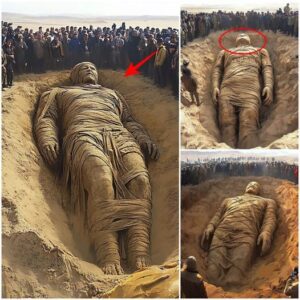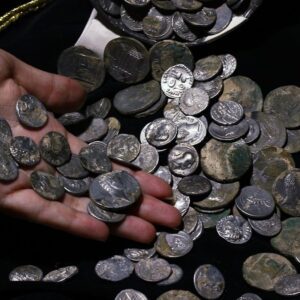The ancient kiss, a timeless testament to the eternity of love, unfolds a poignant narrative. Unearthed in 1973 at the archaeological site of Tepe Hasanlu in the Solduz Valley of Iran’s West Azerbaijan Province, these human remains reveal a compelling story. The site, ravaged by a military attack, witnessed destruction, and the “head wound” attributed to modern excavators. Penn Museum recounts that around 800 BCE, Hasanlu, a settlement in northwestern Iran, fell to an unidentified invading force. In the aftermath, inhabitants were slain, and the site was consumed by flames.
Discovered during the 1973 excavations, the intertwined skeletons of the “lovers” were found in a mudbrick and plaster bin. Despite bearing evidence of trauma around their time of demise, no definitive fatal wounds were identified, leaving room for speculation. Positioned face to face, locked in an eternal embrace, the left skeleton reaches out a hand to touch the other’s face, their arms entwined. Displayed at the Penn Museum from the mid-1970s to the mid-1980s, these “lovers” transcend time, inviting contemplation on the enduring mysteries of love and loss.
The remnants of those laid to rest in Burned Building II, discovered at the same archaeological site, reveal intriguing insights through skeletal analysis. Examining the skeletal profiles of two individuals provides a glimpse into their biological details:
- HAS 73-5-799 SK 336 (skeleton on his back, right side one):
- Mostly complete skeleton of a young adult or older subadult, aged 19-22 years, with recently erupted third molars/wisdom teeth.
- Male pelvic features are evident, while the cranium is less definitive, potentially attributed to the individual’s youth.
- Good health, devoid of dental diseases or old healed injuries.
- HAS 73-5-800 SK 335 (left side skeleton):
- Mostly complete skeleton of an older young adult, aged 30–35 years, showing signs of age or activity-related changes such as osteoarthritis in the spine.
- Sex estimation is less clear, suggesting a probable male overall, with a distinctly male cranium and a more mixed pelvic morphology.
Both skeletons, representing a very young adult male and a slightly older probable male, depict individuals in good health, in the prime of their lives. The enigma of the “lovers” unfolds in various dimensions. Questions arise about how they ended up in the bin – were they deliberately placed or sought refuge from attackers inside it? Unlike other skeletons at the site adorned with artifacts, these individuals had nothing with them except for a stone slab beneath their heads. The absence of possessions raises questions about whether they were stripped of belongings. Lastly, the nature of their relationship remains a mystery. Was their tender pose a spontaneous gesture of comfort amidst dire circumstances? As Hasanlu faced its darkest hour, an embrace – whether from a friend, lover, relative, or even a stranger – could have been a natural response to extreme adversity. The original image, known as “The Lovers,” was sourced from the Penn Museum’s 1972 season at Hasanlu, an archaeological excavation site in Iran’s Western Azerbaijan, Solduz Valley. The skeletons were found in a bin devoid of objects, with only a stone slab beneath the head of the left-hand side skeleton (SK335).
The majority of bodies discovered at Hasanlu were left in the streets and within buildings. Tepe Hasanlu, situated in northwest Iran, stands as a renowned archaeological site of an ancient city. It underwent excavation over ten seasons between 1956 and 1974, conducted by a team from the University Museum, University of Pennsylvania, and the Metropolitan Museum of New York. This archaeological endeavor unearthed numerous valuable artifacts, among them the captivating eternal couple showcased in this photo. (Photo credit: Page Selinsky “Lovers, Friends, or Strangers?” Expedition Magazine 59.2 (2017) / Penn Museum / “The Culture and Social Institutions of Ancient Iran” by Muhammad A. Dandamayev, Vladimir G. Lukonin, Philip L. Kohl).





